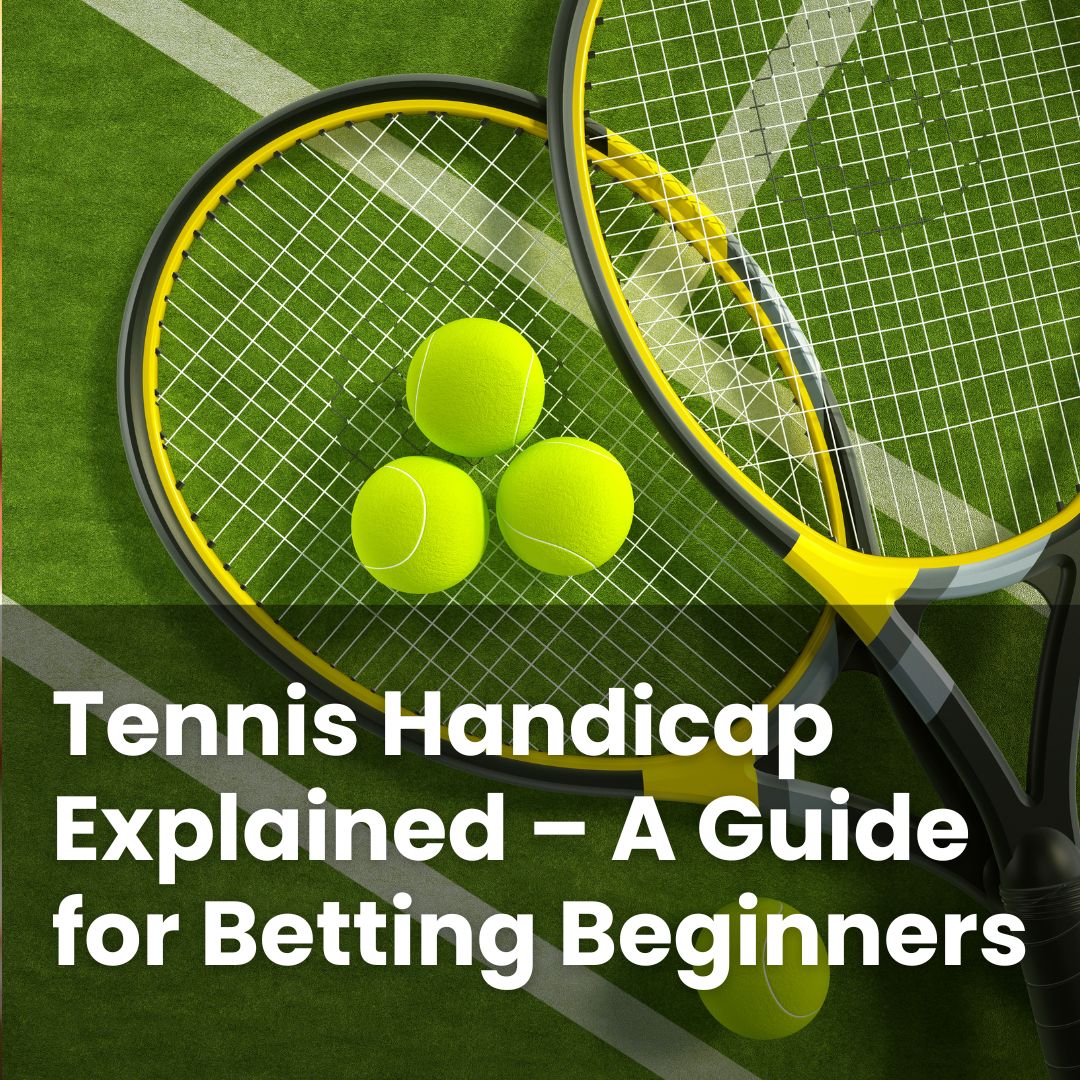Handicap betting in tennis can seem complex at first, but it is a common market offered by many bookmakers. Once you understand how the numbers are applied, the prices start to make sense.
This blog post covers the essentials: how handicaps operate, the main types available, how bookmakers create their lines, what positive and negative figures represent, and how returns are calculated.
You will also find some practical information for newcomers to consider. Read on to learn more.
What Is Tennis Handicap Betting?
Tennis handicap betting is intended to make uneven matches more even in terms of betting markets. One player is given a virtual head start or a penalty, expressed in games or sets, which is only applied for settlement purposes. It does not alter the actual match result.
For example, if a strong favourite is listed at -3.5 games, 3.5 games are deducted from their total when the market is settled. The other player would be +3.5, so that amount is added to their total. After this adjustment, the player with the higher figure is considered the winner for settlement purposes.
The key idea is that it focuses not only on who might win the match, but also by what margin. The next section shows how that works in practice.
How Does Tennis Handicap Betting Work?
When a handicap is displayed, it indicates the adjustment made to each player’s final score. The match is then recalculated using those figures to settle the market.
Take a two-set match ending 6–4, 6–4. The favourite wins 12 games to 8. If that favourite was listed at -3.5 games, subtracting 3.5 gives 8.5 against the opponent’s 8, so the -3.5 selection wins. If it had been -4.5, the adjusted score would be 7.5 to 8, meaning the line would not be met.
There are two main ways these markets are presented, and each offers a slightly different perspective.
Discover The Best Online Casinos
Browse our list of top-recommended casino sites, read reviews from real players & be the first to get access to the latest casino bonuses
What Are the Different Types of Tennis Handicaps?
There are two common forms of tennis handicaps: game handicaps and set handicaps.
Game Handicap
Here, the line is measured in games. You add or subtract the specified number of games from a player’s total, then compare the adjusted scores. This approach may appeal to you if you believe one player will keep the sets competitive even if they do not win overall.
For instance, a player listed at +3.5 games can still have a winning outcome on that line if they lose by three games or fewer overall.
Set Handicap
This version applies to sets rather than games. It is often used if you expect a match to be one-sided or more extended.
In a best-of-three format, a favourite at -1.5 sets needs to win 2–0. In a best-of-five format, -1.5 sets would be successful with a 3–0 or 3–1 victory.
Bookmakers usually offer several alternative lines on both games and sets, so people may select a smaller or larger head start depending on how they assess the contest. The next section explains how those figures are determined.
How Do Bookmakers Set Tennis Handicap Lines?
Bookmakers use data models and tennis-specific factors. They analyse recent results, head-to-head records, serve and return statistics, break-point data, and player performance on different surfaces. Tournament format also matters, since best-of-three and best-of-five matches produce different spreads of game and set outcomes.
Other aspects may include player fitness, scheduling, travel, and environmental conditions such as altitude or whether matches are indoors or outdoors. These factors help shape the line so that each side of the handicap is designed to be roughly similar in probability for settlement.
Because of this balancing process, some people look at handicap markets for matches where a standard match-winner price might appear uneven.
Why Use Tennis Handicap Betting Instead of Moneyline Bets?
A moneyline bet focuses purely on the match winner. In matches with a clear favourite, the return on that selection may be low. Handicap betting gives a different perspective: you may back a player you think may win by a certain margin or support the other player to keep the match closer than expected.
For example, if a favourite is expected to win comfortably, some might look at -3.5 or -4.5 games instead of taking a shorter moneyline price. Conversely, if you believe the other player will stay competitive, a line such as +5.5 games could reflect that view.
It is the same event, just considered through the expected margin rather than only the result.
How Can I Calculate Potential Wins With Tennis Handicap Bets?
Potential returns depend on the odds and the stake placed. With decimal odds, multiply the odds by the stake to see the total return (which includes your original stake). For example, a £10 stake at 1.83 would return £18.30 in total if the selection is successful.
Settlement still depends on the handicap. If you choose to back a player at -3.5 games and the match ends 7–6, 6–4, the favourite has won 13–10 in games. Subtract 3.5 to get 9.5 against 10, meaning the -3.5 selection would not pay. If the match ended 6–3, 6–4 (12–7 in games), that would meet the -3.5 line.
Each bookmaker has its own rules, including how they handle whole-number lines (“pushes”) and situations such as player retirements. It is always worth reviewing those rules before placing a bet.
What Does a Positive or Negative Handicap Mean in Tennis?
A positive figure represents a head start. For example, if Player A is +4.5 games, 4.5 is added to their total at settlement. The bet is successful if the adjusted total exceeds the opponent’s.
A negative figure means a deduction. If Player B is -3.5 games, 3.5 is taken off their total. They must win by more than that number of games for the adjusted figure to be higher.
This follows the same principle as described earlier, simply from the opposite viewpoint.
What Should Beginners Watch Out for When Betting on Tennis Handicaps?
Understanding how the handicap applies is key if you’re interested in placing this sort of bet, but a few other checks can help make the process clearer:
- Match format: Best-of-three and best-of-five structures affect how set handicaps work and influence game margins.
- Bookmaker rules: Review policies on retirements, walkovers, abandoned matches, and whether whole-number handicaps can result in a push.
- Surface and player style: Big servers often play tighter sets with fewer breaks, which can keep game margins smaller even in straight-set results.
- Scheduling and player condition: Travel demands, previous matches, or recent injuries can affect performance beyond rankings.
- Conditions: Altitude, indoor play, and weather can alter how quickly courts play and how effective serving becomes.
- Tiebreak frequency: Matches with many tiebreaks tend to have narrower game margins, which can be relevant to game-based handicaps.
- Budget and approach: Set spending limits that suit your circumstances and avoid chasing outcomes. If gambling stops being enjoyable or causes concern, support is available from organisations such as GambleAware or GamCare.
Understanding how handicaps are calculated, knowing the match format, and reviewing the relevant rules can help you interpret the market clearly and make informed choices that fit your own approach if you’re considering placing this type of bet.
As always, it’s important to keep responsible gambling practices in mind and never wager more than you are willing to lose.





